Fifth Wheel Sliding
Topic 3466 | Page 1
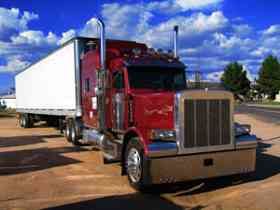
So here we go. Ready? The reason the fifth wheel wouldn't slide, and where the rubber meets the road, is because there was too much weight on the fifth wheel to allow it too slide.
Remember it like this; drop, dump, flip and slide. (1) Drop your landing gear. (2) Dump the air from your air bags. (3) Flip the switch to release the pins, and (4) slide your fifth wheel. It will slide like a hot knife through soft butter.... Smooooth.
Seems like an incredibly valuable piece of information! Thanks for sharing RoadHog!

RoadHog, great to hear from ya! I couldn't help but notice it was a flat-bedder that bothered to help you. 
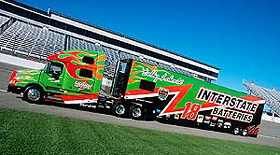
See this exact instance in the reason why we always say ask questions because us vets forget about that detailed stuff because it's 2nd nature to us and we do it automatically. When I read your post and before I got to the bottom of it I knew exactly what the issue was. So yes when sliding a 5th wheel you always drop the landing gear first. But most experienced drives forget to mention it cause we have been doing it so long.

Old school - yea that wasn't lost on me. In fact after he helped me and before I rescaled, I looked around the parking lot at all the reefers aaa d dry cans and chuckled to myself about how it was a flat bedded that helped me. Of course. The fact that he was parked right next to me may have had something to do with it. One thing he said stood out though. He mentioned that he never slides his tandems only the fifth wheel. That struck me as odd. Is that something you do as well? Is that a flat bed thing? I can't imagine not sliding my tandems
Guy - the thing about asking, is, the person you're asking has to know the answer. Neither my instructor, my trainer nor the guys in r/a had an answer and quite frankly that is just sad. My instructor said the 5th wheel was welded shut by the company, my trainer admitted he didn't know, and r/a was more worried about me popping tires. They even asked why I would bother lifting the 5th wheel before advising me to leave it be. That's eve. After I told them I was overweight on my steers. You would think at least the r/a guys would know, right?
I am more than a little amazed that these experienced people are uninformed on this subject
What I should have done was come here to ask the forum, but that's not always practical when on the road. (:-)
Tandems:
Tandem Axles
A set of axles spaced close together, legally defined as more than 40 and less than 96 inches apart by the USDOT. Drivers tend to refer to the tandem axles on their trailer as just "tandems". You might hear a driver say, "I'm 400 pounds overweight on my tandems", referring to his trailer tandems, not his tractor tandems. Tractor tandems are generally just referred to as "drives" which is short for "drive axles".
Tandem:
Tandem Axles
A set of axles spaced close together, legally defined as more than 40 and less than 96 inches apart by the USDOT. Drivers tend to refer to the tandem axles on their trailer as just "tandems". You might hear a driver say, "I'm 400 pounds overweight on my tandems", referring to his trailer tandems, not his tractor tandems. Tractor tandems are generally just referred to as "drives" which is short for "drive axles".
Dm:
Dispatcher, Fleet Manager, Driver Manager
The primary person a driver communicates with at his/her company. A dispatcher can play many roles, depending on the company's structure. Dispatchers may assign freight, file requests for home time, relay messages between the driver and management, inform customer service of any delays, change appointment times, and report information to the load planners.Reefer:
A refrigerated trailer.
My company has welded on 5th wheels so we cant slide them but I wanted to point out something totally different. First off if you are under gross weight most states will allow 13000 on your steers. 2. The 400 lb apu exemption is on your drives not your steers and it not allowed in RI, KY and a few other states idk off hand
APU:
Auxiliary Power Unit
On tractor trailers, and APU is a small diesel engine that powers a heat and air conditioning unit while charging the truck's main batteries at the same time. This allows the driver to remain comfortable in the cab and have access to electric power without running the main truck engine.
Having an APU helps save money in fuel costs and saves wear and tear on the main engine, though they tend to be expensive to install and maintain. Therefore only a very small percentage of the trucks on the road today come equipped with an APU.
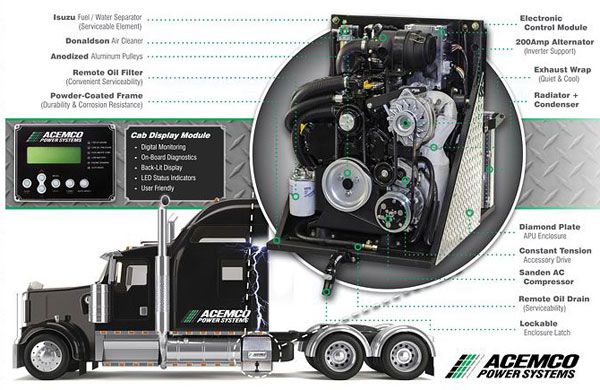
Road Hog, probably what he meant by telling you that he doesn't slide his tandems was just that most of the time flat-bed trailers are set up with 102" split axles on the trailer. Those axles are fixed in place and they will not be over loaded unless you are considerably over gross. So because of that we only slide our fifth wheel when we need to make an adjustment. I've seen a few trailers with adjustable split axles, but it's usually only one axle that is adjustable, and that is because of some of the Canadian rules.
Tandems:
Tandem Axles
A set of axles spaced close together, legally defined as more than 40 and less than 96 inches apart by the USDOT. Drivers tend to refer to the tandem axles on their trailer as just "tandems". You might hear a driver say, "I'm 400 pounds overweight on my tandems", referring to his trailer tandems, not his tractor tandems. Tractor tandems are generally just referred to as "drives" which is short for "drive axles".
Tandem:
Tandem Axles
A set of axles spaced close together, legally defined as more than 40 and less than 96 inches apart by the USDOT. Drivers tend to refer to the tandem axles on their trailer as just "tandems". You might hear a driver say, "I'm 400 pounds overweight on my tandems", referring to his trailer tandems, not his tractor tandems. Tractor tandems are generally just referred to as "drives" which is short for "drive axles".
HOS:
Hours Of Service
HOS refers to the logbook hours of service regulations.
Just to clarify for those that may not be clear. You only get the 400 lbs APU exception when you have a an APU on board. If it's not on the truck you still only get 34000 max on your drives. And as RedGator pointed out there are a few states that don't give you that extra 400 lbs even if you have an APU.
Some may say it's unfair that you are legal with weight in one state and illegal in another cause they don't allow the extra 400 lbs for the APU. Just remember that YOU the driver is responsible for knowing your route and making sure that you are legal in all the states your going to be running in. Before it's asked the axle weights for each state are in the front of all Rand McNally atlas'.
HOS:
Hours Of Service
HOS refers to the logbook hours of service regulations.OWI:
Operating While Intoxicated
APU:
Auxiliary Power Unit
On tractor trailers, and APU is a small diesel engine that powers a heat and air conditioning unit while charging the truck's main batteries at the same time. This allows the driver to remain comfortable in the cab and have access to electric power without running the main truck engine.
Having an APU helps save money in fuel costs and saves wear and tear on the main engine, though they tend to be expensive to install and maintain. Therefore only a very small percentage of the trucks on the road today come equipped with an APU.

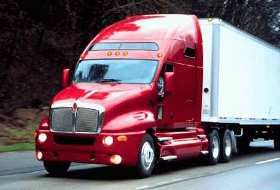
Is it true that most inspectors will allow you some wiggle room on axle weights as long as you are under on gross?
Also, why in the world do your steers keep gradually gaining weight? It's not a case of the "Fork in the Road Effect" is it?
I am more than a little amazed that these experienced people are uninformed on this subject
What I should have done was come here to ask the forum, but that's not always practical when on the road.
Yes you should have! In retrospect, taking 10 minutes to come by and ask us would have saved you a ton of time, trouble, and stress. So indeed it would have been practical had you known, eh?
Hey, ya know what? I even suggested a possible "hot line" one time for drivers who need a quick answer to something. You could simply send an email to TruckingTruth requesting a phone call. Everyone here at TruckingTruth who is on the list of experienced drivers will immediately receive that email with a phone number to call you at. I'd bet 95% of the time your phone would ring within 3-10 minutes of sending that email and you'd have an experienced driver on the line. I can tell you for a fact we have two dozen experienced drivers here that could have answered that question about the 5th wheel no problem at all. Like Guyjax, I knew what the problem was right away and I laughed because I did the same thing myself.
Thanks to Trucking Truth and the High Road Training Program, I knew I had to move 2 slots. I hit the scales for a re-weigh and it was all legal.
That thrills me to death! What Road Hog is referring to is our Truck Weight & Balance section of the High Road Online Training Program. It teaches you all about the weight and length limit laws, The Bridge Law, how to get your axle weights legal, how to figure out where to put your tandems , how to calculate fuel burnoff, how to load freight properly, and about 100 other things you need to know out there to do your job. And listen - most schools do not teach this stuff very well at all. No joke. So if you're planning on getting your trucking career underway you better go through the Weight & Balance section and The Logbook section for the same reason - they don't teach it as well as they should.
I am more than a little amazed that these experienced people are uninformed on this subject
Ya know....I agree. And to be honest, most drivers on the road today don't have the knowledge they should about how to do their jobs and how the trucking industry works. That's a fact. None of us were trained nearly as well as we should have been for this career and most of us don't learn as well as we should from experience. I can't tell you how many experienced drivers I came across over the years that didn't know the basics about how to use a Jake Brake or how to adjust their brakes (you almost never do this anymore, but back in the day we did all the time). I would watch experienced drivers try to get backed into a tricky spot and they didn't know the simplest strategies for getting setup and backed in properly. It's like....."Man, you've been out here for how long now and you're not any better than that?"
A lot of it in my mind is the inadequate training drivers get. That's why I'm working on improving that 7 days a week. Knowing how to do the basics of the job should be a given in this industry. It's too risky not to know the basics. Like recently we had that awesome conversation called Taking A Look At Securing A Flat-Bed Load where even the basics of how to secure a flatbed load properly aren't agreed upon by the manufacturers, trucking companies, and experienced drivers. This should never happen. It's simply a matter of getting the proper training. The flatbed manufacturers know their exact specs. They have to teach the trucking companies, drivers, and DOT officers how to properly secure loads to their trailers. Simple as that. It's not black magic. It's a simple, concise science that's easy to teach to anyone. It just isn't being done properly.
Training in the trucking industry is going to change drastically in the coming months and years. I'm going to continue growing and improving our High Road Training Program to include everything we can think of that drivers should know before they go out there. And I'm going to get all of the help and suggestions I can get from the community here. It's going to become the standard in training.
And hey, what do you guys think of that "hotline email" idea I mentioned earlier? Do you think it's worth starting a new thread and discussing it? I do. It would be a super unique and helpful thing to offer!

CDL:
Commercial Driver's License (CDL)
A CDL is required to drive any of the following vehicles:
- Any combination of vehicles with a gross combined weight rating (GCWR) of 26,001 or more pounds, providing the gross vehicle weight rating (GVWR) of the vehicle being towed is in excess of 10,000 pounds.
- Any single vehicle with a GVWR of 26,001 or more pounds, or any such vehicle towing another not in excess of 10,000 pounds.
- Any vehicle, regardless of size, designed to transport 16 or more persons, including the driver.
- Any vehicle required by federal regulations to be placarded while transporting hazardous materials.
Logbook:
A written or electronic record of a driver's duty status which must be maintained at all times. The driver records the amount of time spent driving, on-duty not driving, in the sleeper berth, or off duty. The enforcement of the Hours Of Service Rules (HOS) are based upon the entries put in a driver's logbook.
Tandems:
Tandem Axles
A set of axles spaced close together, legally defined as more than 40 and less than 96 inches apart by the USDOT. Drivers tend to refer to the tandem axles on their trailer as just "tandems". You might hear a driver say, "I'm 400 pounds overweight on my tandems", referring to his trailer tandems, not his tractor tandems. Tractor tandems are generally just referred to as "drives" which is short for "drive axles".
Tandem:
Tandem Axles
A set of axles spaced close together, legally defined as more than 40 and less than 96 inches apart by the USDOT. Drivers tend to refer to the tandem axles on their trailer as just "tandems". You might hear a driver say, "I'm 400 pounds overweight on my tandems", referring to his trailer tandems, not his tractor tandems. Tractor tandems are generally just referred to as "drives" which is short for "drive axles".
DOT:
Department Of Transportation
A department of the federal executive branch responsible for the national highways and for railroad and airline safety. It also manages Amtrak, the national railroad system, and the Coast Guard.
State and Federal DOT Officers are responsible for commercial vehicle enforcement. "The truck police" you could call them.
OWI:
Operating While Intoxicated
New Reply:
New! Check out our help videos for a better understanding of our forum features

















Preview:






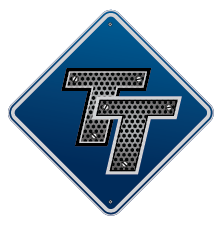

 TT On Facebook
TT On Facebook
Where the rubber meets the road That is what my dad used to tell me when i was young and thought i knew it all. What he meant by it was, in the real world, things dont always work like the books say they should. And since I am on my journey into trucking and sharing my new found knowledge on the fantastic website, i thought it an appropriate title.
My first bit of 'rubber' is an 'AHA' moment i recently experienced. It has to do with sliding the fifth wheel. But before i get into the how, let me give some background.
When I was out with my instructor, we came across a driver wanting to slide his fifth wheel, without the knowledge to do so. My instructor offered to help. The emergency brake was set, the switch to release the pins was flipped, the driver pulled forward, and backwards, but the fifth wheel wouldn't budge. My instructor concluded the company had welded the fifth wheel pins in place to prevent us newbies from adjusting the fifth wheel.
Fast forward several months, where my steers were getting heavy and i was becoming concerned. At 12,500 i wasn't too concerned, as dispatched informed me we are allowed 400 pounds for the APU units on our tractors.
At 13,250, however, i had to try something. Long story short, I did all of the above to no avail. I even contacted our shop for help, as all I was doing was dragging tires. R/A was a ton of help, telling me not to drag tires unless I wanted to buy new tires.
Great. I drove on, thankfully all the weigh stations I came across were closed. Whew.
A few months later, hauling frozen strawberries out of California, I ran into the same situation. Only this time, not only were my steers overweight, but so were my trailer tandems , and in California you don't have any lee way on your maximum tandem length. And I needed 3 more holes to get legal, or head back to the shipper for a repack.
Again, I tried to adjust my fifth wheel, and again all I did was drag tires. Grrrr. I was just about to give up and head back to the shipper when I noticed the fifth wheel pin had moved from the last time i attempted to adjust it. WHOA ... Now I know for sure it's not welded. So I try sliding it again. Again no luck. As I sat there scratching my head, something occurred to me. A few months ago I kept getting a Qualcomm message that my trailer was disconnected, when I could see in my side view mirror that it was clearly attached. A message to Road Assist (the shop) and they assured me it was a malfunction or bad sensor, and not to worry about the annoying QC messages that would sound every minute or so.
Imagine that for a second. 11 hours of driving with an alarm sounding every 2-3 mins that your trailer is disconnected. Every day for a month. And the guys in R/A were wondering why i was so upset about an alarm. Anyway, back to my experience.
This thought popped into my head, because it was at that moment I realized that all that time, a month of alarms, my 5th wheel was loose, or at least the pins were not fully engaged. Not something I was able to detect on my pre-trip either.
Anyway, about that time a flat-bedder comes up and asks me what I'm trying to do. He thinks I am trying to slide my tandems. When I say it's my fifth wheel that won't move, he got a little smile on his face, and said, "you're never gonna get it to slide like that. When I drive," he continues, "I don't even adjust my tandems, I only slide my fifth wheel."
Sometimes truckers can be the nicest people in the world, and wherever this guy is, a million thanks, again.
So here we go. Ready? The reason the fifth wheel wouldn't slide, and where the rubber meets the road, is because there was too much weight on the fifth wheel to allow it too slide.
Remember it like this; drop, dump, flip and slide. (1) Drop your landing gear. (2) Dump the air from your air bags. (3) Flip the switch to release the pins, and (4) slide your fifth wheel. It will slide like a hot knife through soft butter.... Smooooth.
Thanks to Trucking Truth and the High Road Training Program, I knew I had to move 2 slots. I hit the scales for a re-weigh and it was all legal.
CDL:
Commercial Driver's License (CDL)
A CDL is required to drive any of the following vehicles:
Shipper:
The customer who is shipping the freight. This is where the driver will pick up a load and then deliver it to the receiver or consignee.
Tandems:
Tandem Axles
A set of axles spaced close together, legally defined as more than 40 and less than 96 inches apart by the USDOT. Drivers tend to refer to the tandem axles on their trailer as just "tandems". You might hear a driver say, "I'm 400 pounds overweight on my tandems", referring to his trailer tandems, not his tractor tandems. Tractor tandems are generally just referred to as "drives" which is short for "drive axles".
Tandem:
Tandem Axles
A set of axles spaced close together, legally defined as more than 40 and less than 96 inches apart by the USDOT. Drivers tend to refer to the tandem axles on their trailer as just "tandems". You might hear a driver say, "I'm 400 pounds overweight on my tandems", referring to his trailer tandems, not his tractor tandems. Tractor tandems are generally just referred to as "drives" which is short for "drive axles".
Qualcomm:
Omnitracs (a.k.a. Qualcomm) is a satellite-based messaging system with built-in GPS capabilities built by Qualcomm. It has a small computer screen and keyboard and is tied into the truck’s computer. It allows trucking companies to track where the driver is at, monitor the truck, and send and receive messages with the driver – similar to email.OOS:
When a violation by either a driver or company is confirmed, an out-of-service order removes either the driver or the vehicle from the roadway until the violation is corrected.
APU:
Auxiliary Power Unit
On tractor trailers, and APU is a small diesel engine that powers a heat and air conditioning unit while charging the truck's main batteries at the same time. This allows the driver to remain comfortable in the cab and have access to electric power without running the main truck engine.
Having an APU helps save money in fuel costs and saves wear and tear on the main engine, though they tend to be expensive to install and maintain. Therefore only a very small percentage of the trucks on the road today come equipped with an APU.